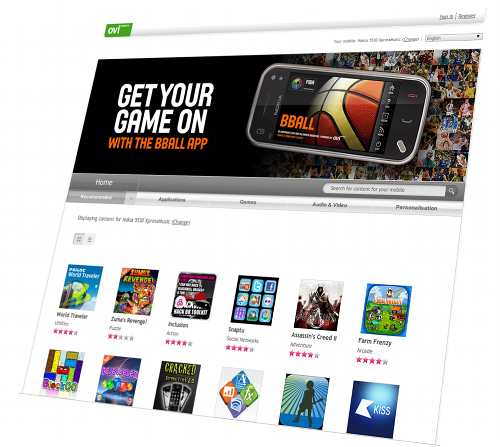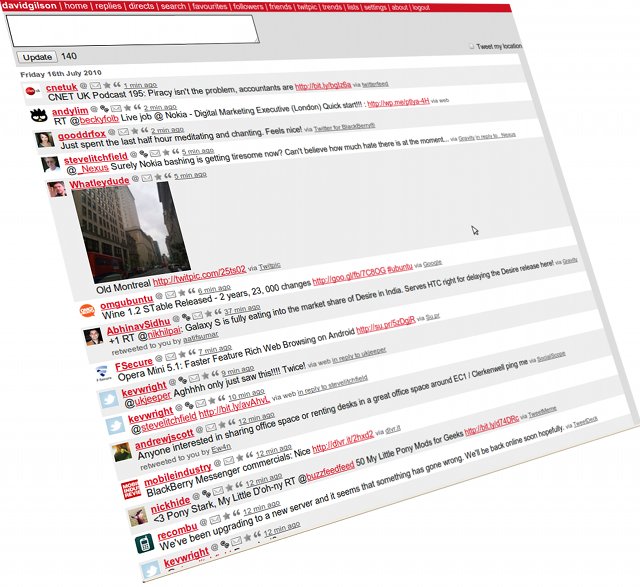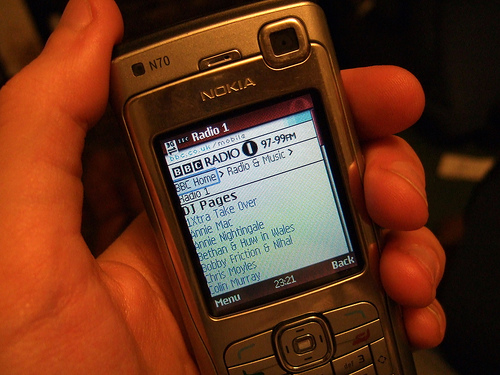Where we are in the mobile application space, and how we got there
It's easy to forget how much the functionality of our phones has changed in the last ten years. Back then, mobile applications were the preserve of PDA users, and the mobile internet was only just taking off, in the form of WAP. Fast forward ten years, and now everyone can expand the functionality of their mobile phones from an abundant source of applications, while the mobile internet has matured and WAP has long since died.
Of course, what we have now didn't happen all at once. As PDA's developed into smartphones, the applications came with them. However, it's easy to see why the likes of S60 and Windows Mobile applications never hit the mainstream (i.e. technologically disinclined users) when one considers that they were distributed from any one of a number of obscure web shops that were clinging on from the heyday of PDA applications. The downloaded applications then required manual installation, which required knowledge of file systems and file managers. Of course, most people reading this will be veterans of those days and look back with nostalgia. Although to the mass market, all of the ways we used to get applications just made mobile software look like some dark digital art.
At the same time, WAP died a slow uneventful death, due to poor user experience and being smothered by network operators insisting on mobile portals which nobody wanted to use. Therefore, it is no wonder that many people regard Apple as having created the mobile application scene. Having a phone platform, along with an integrated ecosystem for discovering, billing and installing applications with just a few finger taps, they tapped into a growing zeitgeist and changed the game. Even then, many of us older geeks still thought of the world wide web as our app store. The app store is now such an integral part of the mobile experience, devices can be partly judged on how well their application delivery system works.

For consumers, the benefits of an application store are clear. There is a convenient method of billing, which most importantly doesn't necessarily involve sitting at a computer, it can all be done on the device. It's easy to browse and discover applications which the user might not have even realised they needed. There is also the security aspect, application stores are a trusted source, rather than downloading executable code from an unknown website.
However, depending on the nature of a particular application and how the developers support it, there is the danger that users have whatever data they're handling locked into their a device. What's more, with the range of mobile applications out there, there is the risk that users become locked into a single phone platform, because of the availability, or lack thereof, of certain applications.
Could the now maturing mobile web offer an alternative to native applications?
So far, we've only looked at this through the eyes of the consumer. However, there's two sides to this topic, because developers need an ecosystem in which they can sustain their work. Without developers there can be no applications for us to use!
There's no doubt that application stores benefit developers by means of providing a reliable billing system and for exposing their work to a much wider audience. However, the downside of applications stores can be the approval process. Apple is well known for having something of a black box approach to approvals. In fact, click here to read a great rant by Mark Suster about why he thinks the Apple application store model is seriously flawed for developers. There have even been cases of developers finding the Ovi Store guidelines restrictive. Of course, the alternative is to sell from an independent website with a standard billing system, but then developers face the risk of obscurity again.


Gravity is one of Symbian's success stories. A native Twitter application, sold from an independent website (as well as Ovi Store), creating decent income.
Whether or not developers use an application store, there are other aspects to consider with writing native applications. Advantageously, while there is a production cost, there are few running costs in comparison to web applications. However, web applications will run on any platform, within the confines of the browser being used. Whereas native applications are just that - native to the platform they're written for. If companies want to reach across all phone platforms, they will have to inevitably multiply their production costs, often hiring separate developer(s) for each platform. Therefore, it's a reasonable business decision for a company to choose to only support one particular platform to keep their costs low. However, this brings us back to the problem of users getting locked in to a single platform. Of course, someone looking for the equivalent of their killer application on another phone platform could be in luck if another company decided to write an equivalent of such-and-such application for another phone platform. Even so, if the nature of the application is such that it stores data locally, there is still the possibility of data lock-in.
Web ("Cloud") applications are showing a firm trend of overlapping functionality with mobile applications, and this will only increase as mobile browsers become more feature rich. For an idea of just what you can do with nothing more than your mobile browser, have a read of Steve's article, "There's a bookmark for that". However, we shouldn't get carried away here. The success of the mobile web does not yet have parity with the success of cloud computing on desktop computers.
The success of cloud computing on the desktop can be attributed to a number of factors. Firstly, flat-rate internet tariffs, which is something that some notable western mobile networks have publicly moved away from. However, the significance of this somewhat depends on how content rich the web application in question is. An application mostly transferring plain text with occasional images should be covered in current data allowances. Next along is latency, cloud computing on desktops benefit from ubiquitous broadband where the lag time between a click and the desired result is near enough to instant. This isn't the case for mobile networks, and is unlikely to be for some years yet. Finally, the functionality of mobile browsers isn't quite as standardised as it is in the desktop space - this is something that could change quite quickly though.

Dabr - The popular web-based Twitter application.
Web applications have unique advantages that can also work against them. The single point of entry means that everyone is running exactly the same set of code, and so the developer knows that he/she can, for example, fix a security bug and everyone will be updated at once, rather than having to worry about getting users to install an update, or writing a 'phone home' system for automatic updates. However, that single point of entry means that any problems due to either a new bug or server issues will affect all users at once too. Indeed, if users have paid for a service, they will expect it to be available all the time, which just isn't the case with the internet, servers do go down from time to time (even All About Symbian!)
Finally, what are the payment trends for native and web applications on mobile devices? Certainly, web application developers face a more difficult challenge than native developers. Consumers are now accustomed to mobile web services being a free companion to desktop services. Therefore web applications are more likely to have to rely on donations and advertising. Even then, as their popularity grows, so do their server costs, and it's unlikely that a liveable profit could be made. This is a stark contrast to the discussions above for native applications, which are now delivered via an integrated discovery and billing system; and people are used to paying for installable applications.
Conclusion
For now at least, native applications offer the best deal for both consumers and developers. Consumers are familiar with the guided experience of browsing and paying for applications in an app store. Meanwhile, as long as developers can get along with the sometimes tetchy approvals process, they know that their work will be seen by many and can rely on a trusted billing system.
This may all change over the coming years though. As Ewan recently wrote about, phone hardware is already powerful enough to support much richer applications (as long as they have sufficient RAM!), which means that mobile browsers have plenty of room for expansion in functionality. We could still yet see the balance between native and web applications in the mobile world significantly shifting.
David Gilson for All About Symbian, 18th July 2010.
With thanks to Jan Ole Suhr (Gravity) and David Carrington (Dabr) for their most valuable insights on this topic.

